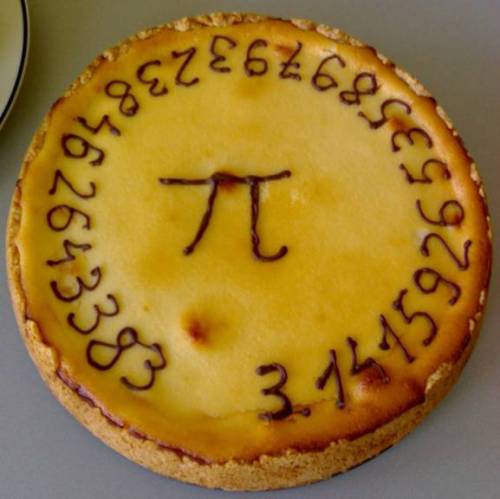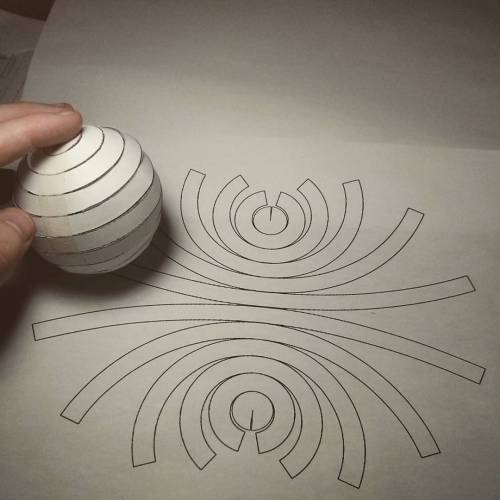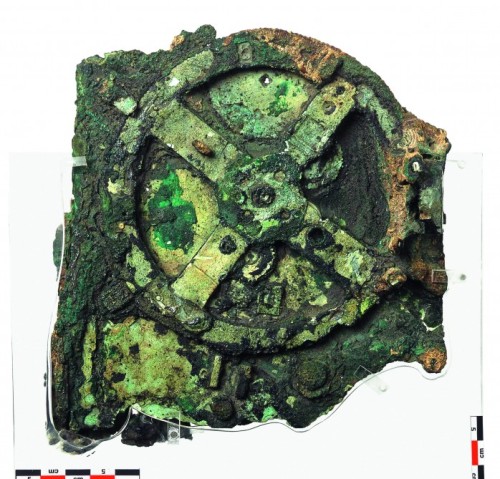#archimedes

“Nikola Tesla, in the opinion of authorities, today is conceded to be the greatest inventor of all times. Tesla has more original inventions to his credit than any other man in history. He is considered greater than Archimedes, Faraday, or Edison. His basic, as well as revolutionary discoveries for sheer audacity have no equal in the annals of the world. His master mind is easily one of the seven wonders of the intellectual world.“
–Hugo Gernsback
(“Nikola Tesla and His Inventions — An Announcement.” Electrical Experimenter, January, 1919.)
The Sword in the Stone: Character Design and Animation
Art by Bill Peet, Milt Kahl, Frank Thomas, and other Disney artistsPost link
Hello. We started this blog in March last year and now we’re really close to finding out why every single day is BRILLIANT. So we’d just like to say a huge thank you to everyone who has read, liked and re-posted our sometimes excessively long ramblings. It’s been a lovely thing to reach so many people across the world from our small corner of rural North Yorkshire. If we make it, and I think we might, tomorrow will be our last post. If you’re not completely fed up with us pestering you every day about things that happened ages ago, you can also find this blog on Wordpress, along with a short explanation of how it came about, and in which we reveal which of us has actually written all of this on the ’about’ page.
Why March 14th is BRILLIANT
Irrational and Unknowable
Today is Pi Day. A day named in honour of the mathematical constant Pi (π). Pi represents a number that is almost, but not quite 3.14. On this day in 1988, a mathematician called Larry Shaw organised the first big Pi day celebration at the Exploratorium, a public learning laboratory in San Francisco. It seems to have involved staff and members of the public marching around in a circle eating fruit pies and what’s not to like about that?. The date was chosen because when you write March 14th in month/day number format it comes out as 3/14, which are the first three digits of Pi. The celebration rather took off and it is now celebrated in lots of places.
You probably remember using Pi in maths at school to work out the perimeter and area of a circle. The outside edge of a circle is the same as its diameter multiplied by Pi. So if you can find out how wide the circle is, you can pretty much find out the size of its circumference by multiplying that number by 3.14. We say pretty much because Pi is a very unusual number. If you knew the diameter and the circumference of the circle and tried to divide one by the other to find out what number Pi actually is, you can’t. Those numbers to the right of the decimal point just keep on going, perhaps for ever, no one is sure. They never settle into a repeating pattern. If, for example, you were to divide a hundred by three, you would get 33.33333… and those threes would go on forever, but that’s a pattern. Pi doesn’t have that. Pi has now been calculated to over thirteen trillion decimal places, and calculations are still going. We still don’t know what it is and can discern no pattern.
Pi is, it seems, an unknowable number. It is also an irrational number, which means it cannot be written as a fraction. The closest we can sensibly get is 22⁄7 . This means that there is, surprisingly, a second day on which Pi is celebrated: July 22nd (day/month format: 22/7) is Pi Approximation Day. But we’re having none of it, we have other plans for that day. We are really trying to avoid writing out a big string of numbers in this post, as we find them difficult to look at and don’t want to inflict them on you. But if we tell you that a more accurate definition of Pi is 3.141592, we can also tell you that March 14th 1592 was ultimate Pi day. Not that anyone was aware of it at the time. Everyone was probably far too busy sailing about discovering stuff, watching Shakespeare or dying of plague. The Pi symbol in it’s mathematical sense has only been around for about 250 years.
Humans have put a lot of effort into working out the relationship of the size of a circle and its diameter. A circle looks like such a simple thing and it seems as if it should be so easy to work out. Four thousand years ago, the Babylonians measured it as three and one eighth. The ancient Egyptians had it at three and one seventh. Egyptologists and people of a mystical persuasion have long been fascinated by the fact that the height of the Great Pyramid at Giza has the same relationship to the perimeter of its base as the diameter of a circle does to it’s circumference. But we have no idea if this was intentional or just a coincidence. Similarly, some think it significant that the first 144 digits of Pi add up to 666, the alleged ‘number of the beast’ in the Book of Revelation.
Archimedes, the ancient Greek mathematician, was so obsessed with trying to work out the value of Pi that he did not notice his city was being invaded by the Romans. His dying words are said to have been: 'Do not disturb my circles’. A sixteenth century mathematician called Ludolph van Ceulen devoted most of his life to calculating Pi to thirty-five decimal places. It was such an achievement that the numbers were engraved on his tombstone. In the nineteenth century, William Shanks calculated the first 707 digits of Pi but, unfortunately, he made a mistake at the 527th place. Luckily he didn’t know about it. The mistake wasn’t spotted until 1944.
Now, of course, we have computers on the case, which is why the calculations now run into trillions. The calculation of Pi is actually used as a stress test for computers. But for all the time and power we have devoted to it, we still don’t know the exact number of Pi. We can use it to measure any circle, but we can never know the exactly how big it is. It is pretty accurate though. If you used only the first nine digits of Pi to measure the circumference of the Earth, it would only be out by one quarter inch over 25,000 miles. If you used the first thirty-nine digits of Pi , you could measure the size of the known universe and the error would be less than the width of a hydrogen atom. So trying to figure out what Pi really is probably isn’t anything to do with accuracy anymore. It’s about our obsession with trying to find patterns in things.
Post link
Can you flatten a sphere?
The answer is NO, you can not. This is why all map projections are innacurate and distorted, requiring some form of compromise between how accurate the angles, distances and areas in a globe are represented.
This is all due to Gauss’sTheorema Egregium, which dictates that you can only bend surfaces without distortion/stretching if you don’t change their Gaussian curvature.
The Gaussian curvature is an intrinsic and important property of a surface. Planes, cylinders and cones all have zero Gaussian curvature, and this is why you can make a tube or a party hat out of a flat piece of paper. A sphere has a positive Gaussian curvature, and a saddle shape has a negative one, so you cannot make those starting out with something flat.
If you like pizza then you are probably intimately familiar with this theorem. That universal trick of bending a pizza slice so it stiffens up is a direct result of the theorem, as the bend forces the other direction to stay flat as to maintain zero Gaussian curvature on the slice. Here’s a Numberphile video explaining it in more detail.
However, there are several ways to approximate a sphere as a collection of shapes you can flatten. For instance, you can project the surface of the sphere onto an icosahedron, a solid with 20 equal triangular faces, giving you what it is called the Dymaxion projection.

The Dymaxion map projection.
The problem with this technique is that you still have a sphere approximated by flat shapes, and not curved ones.
One of the earliest proofs of the surface area of the sphere (4πr2) came from the great Greek mathematician Archimedes. He realized that he could approximate the surface of the sphere arbitrarily close by stacks of truncated cones. The animation below shows this construction.

The great thing about cones is that not only they are curved surfaces, they also have zero curvature! This means we can flatten each of those conical strips onto a flat sheet of paper, which will then be a good approximation of a sphere.
So what does this flattened sphere approximated by conical strips look like? Check the image below.

But this is not the only way to distribute the strips. We could also align them by a corner, like this:

All of this is not exactly new, of course. In the limit, what you have is called a American polyconic projection, which does require stretching in order to fill the gaps between the ending of the strips. Gauss’s Theorema Egregium demands this.
But I never saw anyone assembling one of these polyconic approximations. I wanted to try it out with paper, and that photo above is the result.
It’s really hard to put together and it doesn’t hold itself up too well, but it’s a nice little reminder that math works after all!
Here’s the PDF to print it out, if you want to try it yourself. Send me a picture if you do!
Post link
Did Archimedes design the Antikythera Mechanism?
Since its discovery over a century ago, the Antikythera Mechanism has had scholars scratching their heads over how the Greeks managed to build a mechanical computer a hundred years before the birth of Christ and thousands of years before anything similar. But now things have become even stranger as researchers claim that it’s over a hundred years older than previously believed and may have been built by a famous hand.
The Antikythera Mechanism was discovered in 1901 by sponge divers off the Greek island of Antikythera. At first, not much was made of it, but after the coral-encrusted, corroded mass of bronze gears was later studied using x-rays, gamma rays, and neutrons, and then reconstructed, it turned out to be something astonishing.
The device at first was thought to be some sort of surprisingly early clock, but then it turned out to be the oldest computer known. In fact it was an analog astronomical computer based on the principle of the differential calculator that uses gear trains as a way of performing complex calculations. On further study, the device proved capable of calculating, among other things, the position of the planets, sidereal time, and eclipses.
And all of this by using technology that was never realized to exist in the ancient world and after it vanished, didn’t reappear until the 14th century. Even today the device sparks interest as the design is adapted to not only museum exhibits, but also watches.
First reported in the New York Times, the new date for the Antikythera Mechanism is the result of work by James Evans, professor of physics at University of Puget Sound, and Christián Carman, history of science professor at University of Quilmes, Argentina.
The new date is based on a reconstruction of the device made by John Steele of Brown University in 2008. This involved matching the calculations against Babylonian eclipse records and applying an analysis that took into account lunar and solar anomalies, solar eclipses, and lunar and solar eclipses cycles that might have been missing and other inaccuracies – not the least of which might have been caused by the fact that much of the device was never salvaged.
By a process of elimination, Evans and Carman eliminated hundreds of eclipse patterns until a match was found that placed the earliest eclipse on the device matching the year 205 BC. According to the researchers, such a date not only places the manufacturing date perhaps a hundred years earlier than the previous date of about 100 BC, but also indicates that the mathematics used to design the device were derived from Babylonian methods rather than Greek trigonometry, which did not exist at that time.
The researchers also put forward another tantalizing possibility opened by the new date. According to Cicero, there was a story that a device much like the one found at Antikythera was made by Archimedes and captured by the Roman general Marcellus after the sack of Syracuse and the death of Archimedes in 212 BC. It is remotely possible that it and the Antikythera Mechanism may be one and the same. The researchers emphasize that the correlation is conjectural, but it does suggest that the age of the device is not only now known, but that a famous name can be given to its maker.
The results were published in the Archive for History of Exact Science.
Source:University of Puget Sound
Post link

WIP of Medic and Hacker enjoying a quiet moment with Archimedes and another one of Medic’s pet doves.
Hacker is a major animal lover and will often feed and love on the doves in her spare time.
Hacker © Me






















